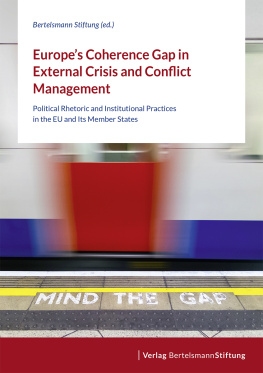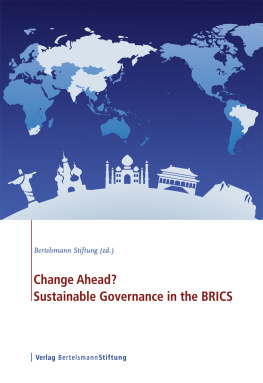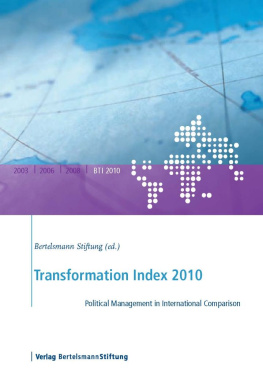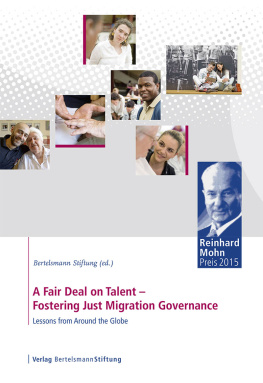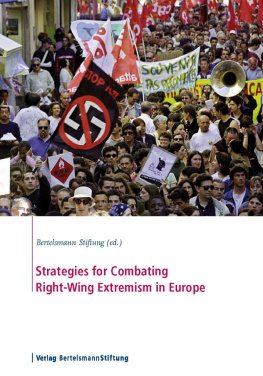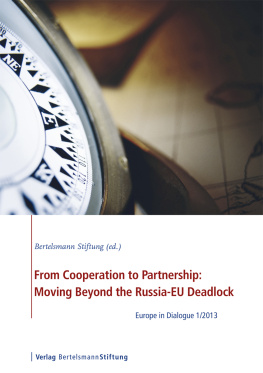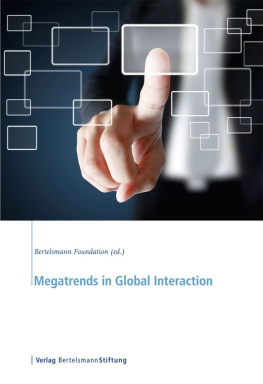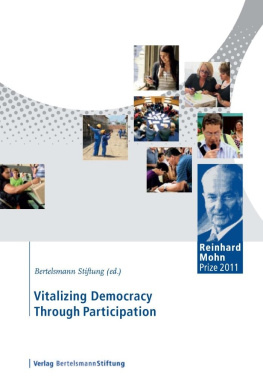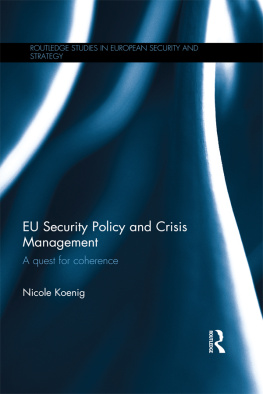Bibliographic information published by the Deutsche Nationalbibliothek
The Deutsche Nationalbibliothek lists this publication in the Deutsche Nationalbibliografie; detailed bibliographic data is available on the Internet at http://dnb.dnb.de.
2020 Verlag Bertelsmann Stiftung, Guetersloh
Responsible: Stefani Weiss
Copy editor: Josh Ward
Production editor: Christiane Raffel
Cover design: Elisabeth Menke
Cover illustration: Shutterstock/Thomas Dutour
Illustration pp. 372, 376, 377: Dieter Dollacker
Typesetting: Katrin Berkenkamp
GmbH & Co. KG, Bielefeld
ISBN 978-3-86793-911-9 (print)
ISBN 978-3-86793-912-6 (e-book PDF)
ISBN 978-3-86793-913-3 (e-book EPUB)
www.bertelsmann-stiftung.org/publications
Introduction
Stefani Weiss
The end of the Cold War initially relaxed the security situation in Europe and enabled the European Union to press ahead with its effort to peacefully unify the continent. Almost everywhere (with the exception of the Balkans), hopes were flying high that a new era would dawn in which human rights and democracy could triumph and usher in a lasting era of peaceful, prosperous development. The EU, in particular, was confident that its soft power would enable it to export its own peace-through-integration model. In fact, nothing less was expected than that the EU would soon be surrounded by a ring of well-governed democratic states that shared its values of rules-based, non-violent conflict resolution in internal and foreign affairs.
Today, we know that history took a different course. Geopolitics is back, and the growing superpower rivalry between the United States and China not to mention Russias new hegemonic policy do not bode well. In response to these developments, many democratic reform processes that the EU and its member states were engaging in slowed down, suffered setbacks or failed to materialise at all. Accordingly, intra- and inter-state crises and conflicts continue to haunt international affairs and this worrying situation is only exacerbated by climate change. In fact, the 2019 annual report of the United Nations High Commissioner for Refugees says that there was a record number of forcibly displaced persons worldwide in 2018, a staggering figure of over 70 million.
The impact of the deteriorating security environment is becoming increasingly tangible in Europe itself, and threatens both security and political stability within the EU. As with 9/11 in the US, the large-scale attacks by Islamist-motivated terrorists in Brussels, Paris, London, Berlin and elsewhere have left European citizens feeling extremely vulnerable and insecure. Russias 2014 annexation of Crimea and the hybrid warfare it is engaged in in eastern Ukraine have broken with the post-Cold War security order that the EU has trusted in and relied upon. Furthermore, hundreds of thousands of people who were seeking refuge in Europe following the still-ongoing war in Syria and the wider region have heightened Europeans anxieties about cultural alienation and a loss of social status, leading to increased support for extremist parties.
Given these circumstances, the EU is being called upon and perhaps even more so than ever before to maintain its influence as a force for peace and to become the responsible global actor it expressly desires to be. Unfortunately, we repeatedly see that both the EU and its member states are failing to live up to their aspirations. In sad fact, more often than not, the EUs response to crisis is too little, too late. For example, the Union is largely absent from Syria and the rest of the Middle East; France and Italy have torpedoed each others and the EUs policies in Libya; and only France and Germany have been making overt efforts to persuade Russian President Vladimir Putin to end the war in the Donbas region. Whats more, though they are all well-intended, EU crisis- and conflict-management missions in the Sahel region and other parts of Africa often lack the military clout needed to have a significant and/or lasting impact.
Arguably, the EU is the only instrument that its member states and even the biggest among them have at their disposal to make a difference on the international stage. Nevertheless, we see that the EU rarely speaks with one voice, and that national interests prevail over joint actions. This results from the fact that the EUs foreign and security policy has predominantly remained the domain of its member states. In principle, this could only be changed if member states were to transfer the exercise of their sovereign powers and allow for foreign and security policy to be (to use a good EU word) communitarised. Unfortunately, the chances that this will happen anytime soon are exceedingly slim.
The policy coherence agenda
Before thinking about any major treaty reforms that a truly common foreign and security policy would require, it is worth reflecting on whether there are other incremental reforms that could be made to the existing system to enhance the capabilities of the EU and its member states to effectively respond to and manage external crises and conflicts.
Already in the early 1990s, there was a growing awareness that the complex and interlinked problems of human security, social and economic underdevelopment, and bad governance factors that underpinned and kept fuelling many of these conflicts required entirely new policy approaches if there were to be any chance of achieving a successful peace policy. A first step in this direction was taken in 1992 with the release of the UN report An Agenda for Peace. The Agenda, which acknowledged the nexus between development and security, prompted a reorganisation of the UNs peacebuilding architecture. Its aim was to achieve greater policy coherence across the political, military, humanitarian and development realms by improving coordination and by pooling the responsibilities spread out among multiple departments and agencies, on the one hand, and the instruments that played a role in peacebuilding, on the other.
Since then, there have been ongoing discussions about the need for a new approach to foreign, development and security policy. In addition to being subject to a broad concept of security, this approach is meant to align short-term responses focused on security and stability with the long-term development concerns set forth in the Sustainable Development Goals adopted by the UN in 2015. Under various names such as 3D, for the interaction of diplomacy, development and defence, or integrated approach, as most recently in the EU Global Strategy of 2016 this holistic policy approach has been further developed and refined.
The concept has repeatedly been given fresh impetus by organisational theory, which deals with complex, interdependent and rapidly changing problems in a wide range of policy areas. This theory has formed the theoretical basis for whole-of-government approaches (WGAs), which aim to foster vertical and horizontal coordination of various government departments and public institutions (see, e.g., Christensen and Laegreid 2007; Bouckaert, Peters and Verhoest 2010; Colgan, Kennedy and Doherty 2014; Tosun and Lang 2017; Gray and Purdy 2018; Trein, Meyer and Maggetti 2019). A WGA has two basic elements: first, joint conflict analysis; and, second, jointly elaborated strategies that are coordinated and deconflicted at a minimum and ideally integrated to enable responses that align interests, avoid duplications and reduce costs.

